You need to know the differences between a data hub and a data lake to make better data-driven decisions. Data hub vs data lake is not just a technical choice. When you use a data hub, you get improved data quality and easier access for business teams. You do not need to rely on IT for every report. Data lakes store raw data and often lack clear governance, which can make management difficult. Understanding these differences helps you create a data strategy that supports your goals.
Data Hub vs Data Lake: Definition, Features, and How It Works
What Is a Data Hub?
You might wonder what a data hub actually is. In simple terms, a data hub acts as a central place where your organization stores, defines, and delivers data for different applications. This centralization helps you manage and share data more easily across teams. The table below gives you a formal definition:
| Term | Definition |
|---|---|
| Data Hub | A centralized system for data storage, definition, and delivery, serving as a central repository for applications. |
A data hub is not the same as a data lake. When you compare data hub vs data lake, you will see that a data hub focuses on organizing and delivering data, while a data lake stores raw data in its original form.
Core Features of a Data Hub
You will find that a data hub comes with several important features that support your data needs:
- Growing demand for data center capacity driven by cloud migration.
- Rise of artificial intelligence (AI) influencing data center types and investments.
- Importance of strong relationships with tech companies for investment success.
These features help you keep up with the latest trends in data management and ensure your data hub remains effective as your organization grows.
How Data Hubs Operate in Modern Data Architectures
A data hub fits into modern data architectures in several ways. You can see some common architectural patterns in the table below:
| Architectural Pattern | Description | Use Cases |
|---|---|---|
| Hub and Spoke Model | A centralized data repository (the hub) with connected data marts (spokes). | Large organizations with diverse departmental needs. |
| Data Mesh | A decentralized approach to data architecture focusing on domain-oriented ownership. | Organizations aiming for agility and scalability. |
| Data Fabric | An integrated layer of data and services that connects various data sources. | Complex environments needing seamless data access. |
You may also hear about related concepts like data lake, data virtualization, modern data warehouse, data fabric, data platform, data lakehouse, and data mesh. Each of these plays a role in how you design your data systems, but a data hub often serves as the backbone for sharing and managing data efficiently.
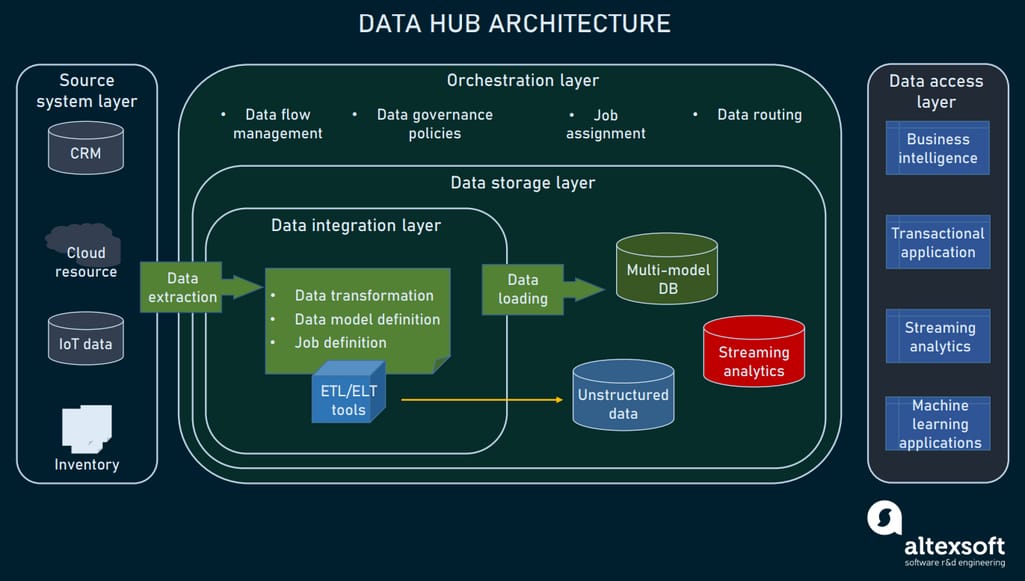
Data Hub vs Data Lake: Definition, Features, and How It Works
What Is a Data Lake?
You may have heard the term data lake when talking about modern data storage. A data lake is a large storage system that lets you keep all your data in one place, no matter the format. You can store structured data like tables, semi-structured data like JSON files, or even unstructured data such as images and videos. You do not need to organize or process the data before storing it. This approach gives you flexibility and helps you collect information from many sources.
Core Features of a Data Lake
A data lake offers several important features that make it popular for organizations handling big data. You can see some of the main features in the table below:
| Feature | Description |
|---|---|
| Elastic storage | Stores any amount of data, from gigabytes to petabytes, without slowing down. |
| Schema-on-read | Applies structure only when you access the data, making it easy to explore. |
| Multi-tenancy | Lets many users or teams work with the same data while keeping it secure. |
| Integrated analytics | Connects with analytics tools for deep data analysis. |
You will also notice these benefits:
- Scalability: Handles huge amounts of data without losing speed.
- Flexibility: Accepts data from many sources, including unstructured formats.
- Cost-effectiveness: Saves money by removing the need for expensive data preparation.
How Data Lakes Operate in Modern Data Architectures
You can understand how data lakes work by looking at their main layers:
| Layer | Description |
|---|---|
| Storage layer | Holds raw data in many formats, often using cloud storage like Amazon S3. |
| Processing layer | Transforms, cleans, and analyzes data with tools such as Apache Spark. |
| Metadata layer | Adds context and helps you find and organize your data. |
| Security layer | Protects your data and controls who can access it. |
| Governance layer | Keeps your data accurate, compliant, and managed over time. |
A data lake supports many types of data and works well with advanced analytics or machine learning projects. You can process data in real time or in batches. Many companies use data lakes as the foundation for their AI and analytics strategies.
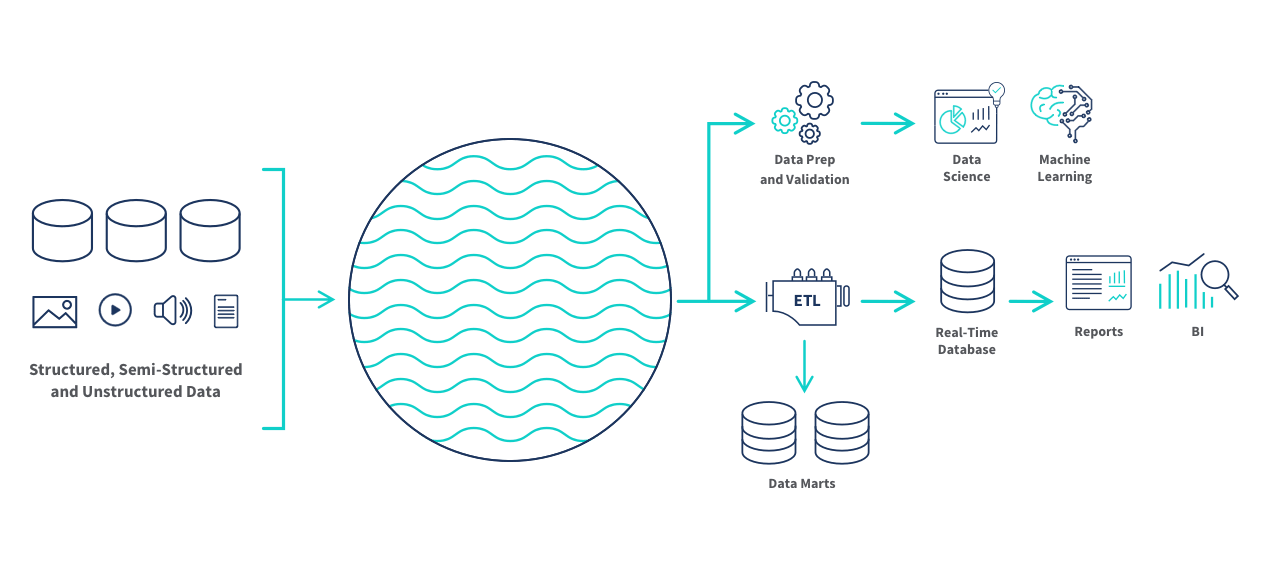
Data Hub vs Data Lake: Key Differences

When you compare data hub vs data lake, you see important differences in how each system manages, stores, and delivers data. Understanding these differences helps you choose the right solution for your organization.
Data Structure and Storage Approaches
You need to know how each system handles data structure and storage. Data hubs use a centralized approach to manage and store integrated data. This means you get organized, curated information that is ready for use across different applications. Data hubs focus on data mediation and movement, not long-term storage.
Data lakes, on the other hand, offer scalable storage for large volumes of raw data. You can store structured, semi-structured, and unstructured data in their native formats. Data lakes do not require you to process or organize data before storing it. This flexibility makes them ideal for big data environments.
Here is a table that highlights the main differences:
| Feature | Data Hub | Data Lake |
|---|---|---|
| Data Structure | Centralized approach to manage and store integrated data. | Scalable storage for large volumes of raw data, accommodating both structured and unstructured data. |
| Storage Approach | Not typically a long-term storage solution; focuses on data mediation and movement. | Stores diverse datasets in their native format without pre-processing, ideal for big data environments. |
You see that data lakes support structured, semi-structured, and unstructured data. They store information in raw form, which gives you high flexibility. Data hubs provide a more organized structure, making it easier to deliver data to business users.
Data Governance and Security
You must consider governance and security when evaluating data hub vs data lake. Data hubs act as a mediation point. They help you control the flow of data between systems and apply governance rules as data moves through your organization. This proactive approach ensures that your data remains accurate and compliant.
Data lakes serve as endpoints for data collection. They focus on supporting analytics rather than governance. You may find that governance controls in data lakes are limited and often reactive. Data warehouses also have limited governance, which can lead to challenges in maintaining data quality and security.
Tip: If your organization needs strong governance and security, a data hub provides better control over data movement and compliance.
Integration and Accessibility
You want your data to be accessible to everyone who needs it. Data hubs offer structured access, allowing diverse business users to retrieve information quickly. You do not need advanced technical skills to use a data hub. This makes it easier for teams across your organization to work with data.
Data lakes often require technical expertise. You may need to know how to query and retrieve data using specialized tools. This can make it harder for non-technical users to access the information they need.
- Data hubs support rapid access for business users.
- Data lakes require technical skills for data retrieval.
When you compare data hub vs data lake, you see that data hubs make integration and accessibility easier for most users. Data lakes provide flexibility and scalability but may limit access for non-technical teams.
Scalability and Performance
When you compare scalability and performance in the context of data hub vs data lake, you see clear differences in how each system handles growth and heavy workloads. Data lakes stand out for their ability to store massive amounts of data at a lower cost. You can use cloud platforms like AWS S3 or Azure Blob Storage to expand your storage as your needs grow. This makes data lakes a popular choice for organizations that expect their data to increase rapidly.
- Data lakes offer cost-effective storage for both structured and unstructured data.
- Most data and analytics innovations now rely on cloud-based solutions because of the scalability that data lakes provide.
- Data lakes handle large-scale data environments efficiently, making them suitable for big data analytics.
Data warehouses, while powerful for structured data and complex analytics, often require more expensive processing power and licensing fees. They excel at processing structured data quickly but may not scale as easily or affordably as data lakes.
Performance also differs between these systems, especially under high-volume workloads. The table below shows how data lakes and lakehouses perform across several important metrics:
| Metric | Data Lakes | Lakehouses |
|---|---|---|
| Query Speed | Higher latency due to full file scans | Optimized metadata layers reduce execution time |
| Concurrency Handling | Lacks reliable mechanisms for multi-user access | ACID transactions ensure data integrity |
| Streaming Support | Processes data in batches | Supports real-time ingestion with low latency |
| Data Skipping | Absent | Built-in optimization techniques improve speed |
You notice that data lakes may have higher latency because they scan entire files during queries. Lakehouses, which combine features of data lakes and warehouses, use optimized metadata layers to speed up queries. If you need real-time data ingestion and low latency, lakehouses provide better support. Data hubs, on the other hand, focus on integrating and delivering data efficiently, often serving as a bridge between different systems rather than as a primary storage solution.
Note: By 2026, most data and analytics innovations will be cloud-based, driven by the scalability of data lakes. If your organization expects rapid data growth, you should consider how each system will handle future demands.
Typical Use Cases
Understanding the typical use cases helps you decide when to use a data hub vs data lake. Each system excels in different scenarios, depending on your data needs and business goals.
The table below summarizes the most common use cases for both systems:
| Data Lakes Use Cases | Data Hubs Use Cases |
|---|---|
| Storing large volumes of raw, unstructured, and semi-structured data | Integrating and sharing structured data |
| Enabling advanced analytics and machine learning | Ensuring data consistency and quality |
| Ideal for big data analytics and historical data archiving | Facilitating real-time data integration and centralized access |
| Supporting data exploration and discovery | Serving as a central point for data governance and access control |
You use data lakes when you need to store and analyze vast amounts of raw data. This includes unstructured formats like text, images, or logs. Data lakes support advanced analytics, machine learning, and historical data archiving. You can explore and discover new insights from your data without strict structure requirements.
You turn to a data hub when you want to integrate and share structured data across your organization. Data hubs help you maintain data consistency and quality. They also make real-time data integration possible, giving you centralized access and control. If you need a central point for data governance and access control, a data hub is the right choice.
When you evaluate data hub vs data lake, think about your primary goals. If you need flexible, scalable storage for big data analytics, choose a data lake. If you want to streamline data integration and ensure high data quality for business users, a data hub will serve you better.
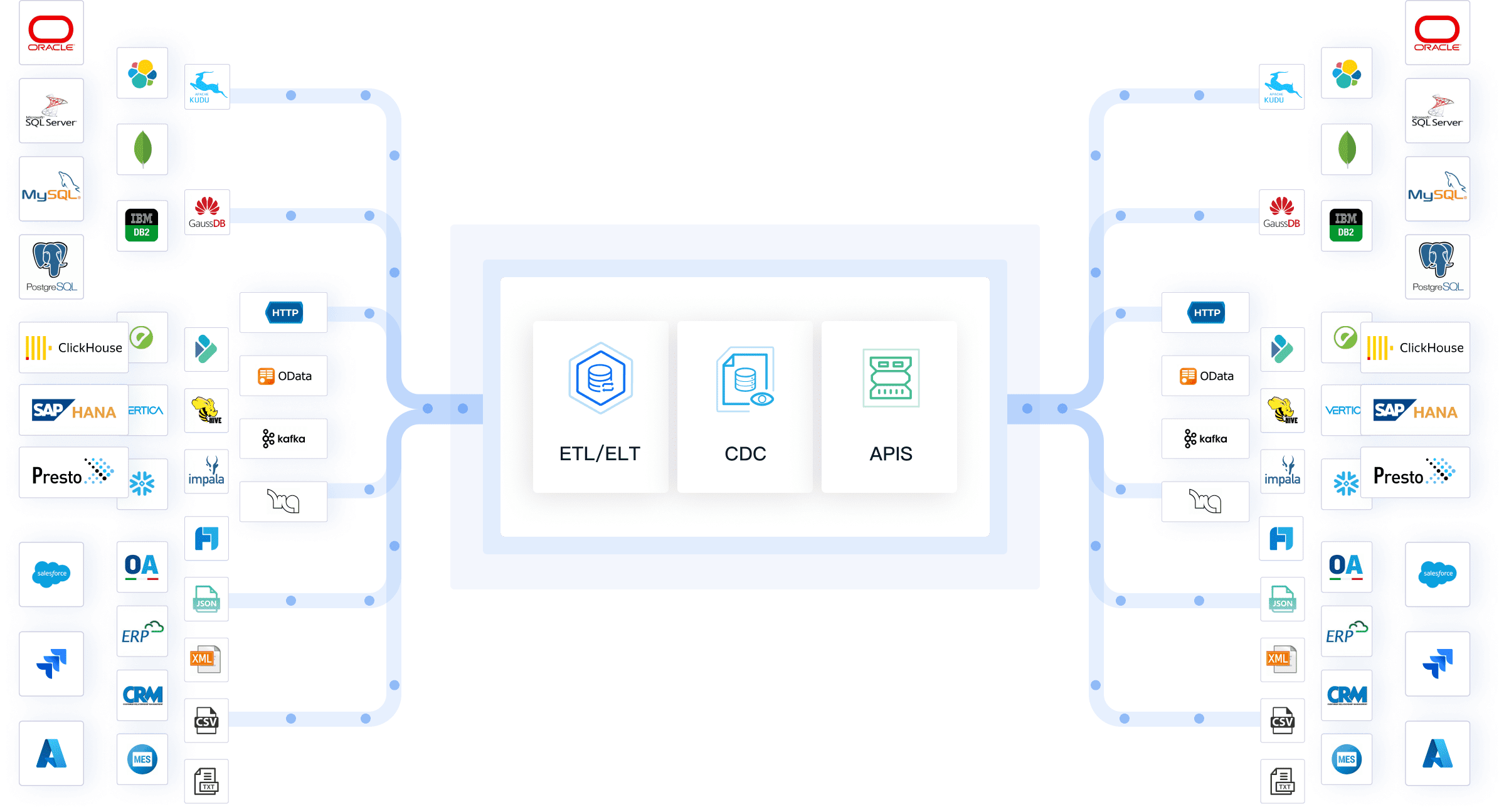
Data Hub vs Data Lake: Use Cases and Practical Examples
Best Use Cases for Data Hubs
You may wonder when a data hub makes the most sense for your organization. Here are some leading scenarios where you will see significant value:
- Your existing data infrastructure is difficult to manage and scale. You might struggle with multiple systems that do not communicate well.
- You need a single point of access for multiple data use cases. This helps you avoid confusion and ensures everyone works with the same information.
- Your data isn’t properly governed. You want to improve data quality and compliance across your business.
These situations often lead to inefficiencies and errors. A data hub can help you solve these problems by centralizing access and improving control.
Real-World Example: FineDataLink for Data Integration
FineDataLink provides a strong example of how a data hub can work in practice. Many businesses use FineDataLink to connect and harmonize data from different sources. This approach addresses the challenge of having data stored in separate places. The table below shows how FineDataLink supports data integration:
| Feature/Benefit | Description |
|---|---|
| Data Integration | FineDataLink enables businesses to connect and harmonize data from various sources, addressing the challenge of disparate data storage. |
| Consistency and Reliability | It ensures that the data used in BI reports is consistent and reliable, reducing errors from disparate datasets. |
| Automation | The tool automates data synchronization, ensuring that BI reports are always up-to-date. |
| Data Transformation | FineDataLink allows for data transformation during integration, ensuring data is in the right format for analysis. |
You can use FineDataLink to automate data flows, maintain reliable business intelligence, and transform data for better analysis. This makes your data processes more efficient and accurate.
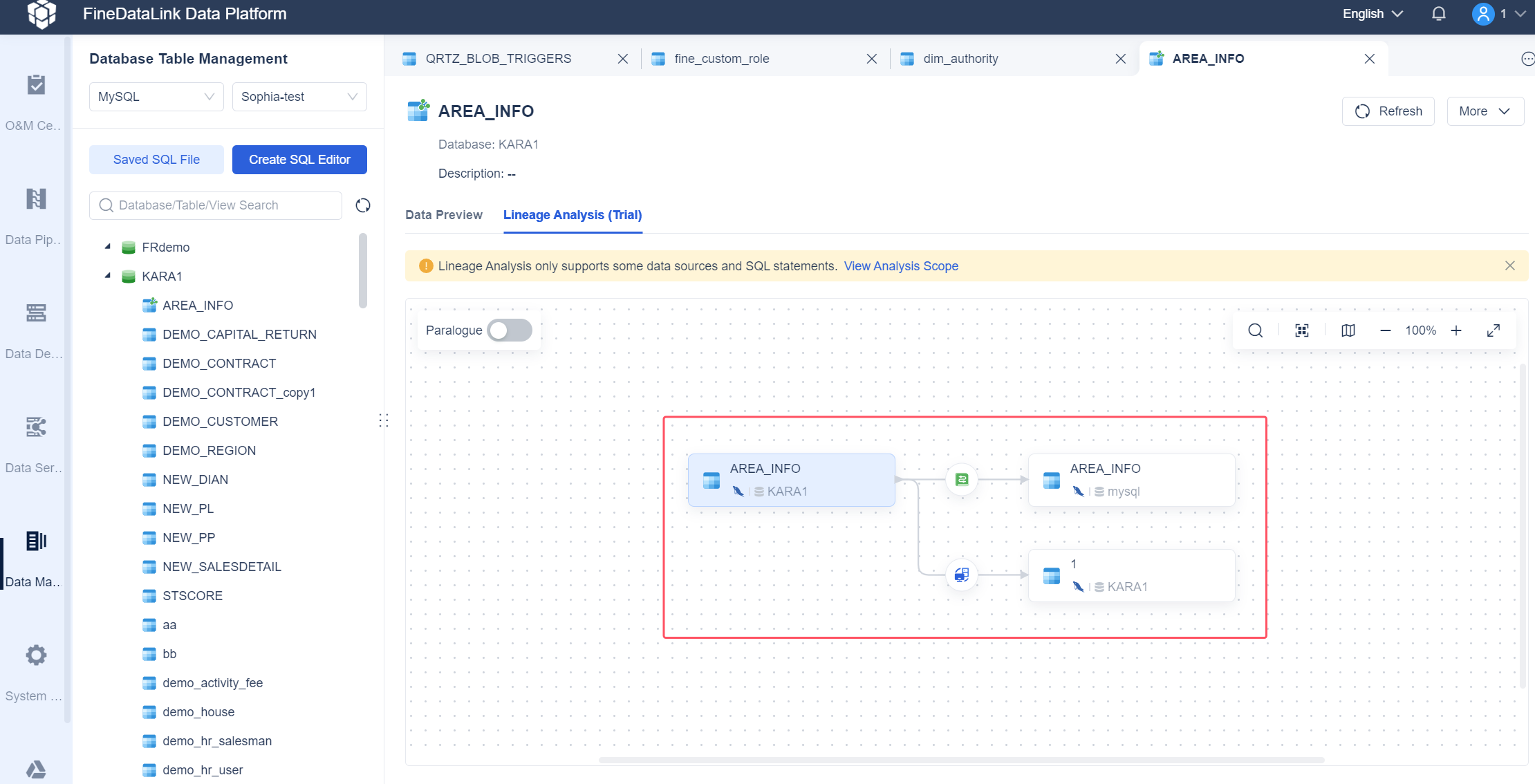
Industries That Benefit from Data Hubs
Many industries benefit from using a data hub. You will find value in sectors such as finance, healthcare, manufacturing, and retail. These industries often deal with large amounts of data from different sources. A data hub helps you manage this complexity, improve data quality, and support better decision-making. If your organization needs to integrate data quickly and ensure compliance, a data hub offers a practical solution.
Data Hub vs Data Lake: Use Cases and Practical Examples

Best Use Cases for Data Lakes
You can use a data lake in many ways to support your business goals. Here are some of the most impactful use cases:
- You can run advanced analytics and machine learning on large datasets.
- You can store and analyze data from Internet of Things (IoT) devices.
- You can explore and research data without strict structure.
- You can create a centralized data repository for your organization.
- You can build real-time dashboards and reports.
- You can archive data or use data lake-as-a-service for flexible storage.
- You can support industry-specific needs, such as in insurance, banking, or manufacturing.
Tip: A data lake gives you the flexibility to store all types of data, making it easier to discover new insights and support innovation.
Real-World Example: Analytics and Machine Learning
Many organizations use data lakes to power analytics and machine learning. You can see how different industries benefit from this approach in the table below:
| Use Case | Description |
|---|---|
| Retail | You can analyze customer behavior and purchase history to offer personalized recommendations. |
| Healthcare | You can store patient data from many sources to improve diagnosis and treatment. |
| Manufacturing | You can monitor and optimize production processes to lower operational costs. |
| Financial Services | You can gain insights into customer behaviors, detect fraud, and improve risk management. |
You can analyze vast amounts of data, reduce data silos, and build a strong foundation for analytics. When you combine artificial intelligence and machine learning with a data lake, you can improve predictive modeling and automate decision-making.
Industries That Benefit from Data Lakes
Many industries have achieved significant results by using data lakes. For example, non-profit organizations can measure program impact, understand beneficiary needs, and improve fundraising. Healthcare providers can optimize staffing, enhance workforce training, and manage costs more effectively.
| Industry | Significant Results Achieved |
|---|---|
| Non-Profit Organizations | Quantify program impact, understand demographics, enhance fundraising, and improve resource allocation. |
| Healthcare | Optimize staffing, improve retention, enhance training, and manage operational costs. |
You can see that a data lake supports a wide range of industries by improving efficiency, supporting better decisions, and enabling new ways to use data.
Combining Data Hub vs Data Lake for a Unified Data Strategy
Complementary Roles in Enterprise Data Management
You may wonder how to get the most value from your data hub vs data lake investments. When you combine both systems, you create a unified data strategy that supports every stage of your data journey. A data hub helps you organize, govern, and deliver trusted data to business users. A data lake gives you the flexibility to store and analyze raw data from many sources. By using both, you can meet the needs of different teams in your organization.
A unified approach brings several important benefits. You gain a holistic view of your data, which leads to better decision-making. You also improve the accuracy of your insights because you can use both structured and unstructured data. Companies that use a unified data strategy often see faster decision-making and better financial performance. You also prepare your infrastructure for future growth and reduce operational costs.
Here is a table that summarizes the main benefits of combining a data hub and data lake:
| Benefit | Description |
|---|---|
| Improved Decision-Making | You get a complete view of your data, so you make better decisions. |
| Financial Outperformance | Companies with unified strategies often perform better financially. |
| Faster Decision-Making | You access all your data quickly, so you make decisions faster. |
| More Accurate Insights | You use diverse data types for more reliable insights. |
| Future-Ready Infrastructure | Your platform adapts to new analytical needs. |
| Cost Reduction | You store and process data more efficiently, saving money. |
Hybrid Architectures: FineDataLink’s Approach
You can achieve a hybrid architecture by integrating your data hub vs data lake systems. FineDataLink offers a practical solution for this approach. With FineDataLink, you can connect data from multiple sources, synchronize it in real time, and transform it for business intelligence. The platform supports both structured and unstructured data, making it easy to bridge your data hub and data lake.
FineDataLink uses a low-code interface, so you can build data pipelines without advanced programming skills. You can automate ETL and ELT processes, ensuring your data is always up to date and ready for analysis. The platform also provides strong data governance, which helps you maintain data quality and compliance across your organization.
When you use FineDataLink, you create a unified data layer that supports both operational and analytical needs. You can deliver trusted data to business users while keeping the flexibility to explore raw data for advanced analytics. This hybrid approach helps you maximize the value of your data hub vs data lake investments and supports a future-ready data strategy.

You have seen that data hubs and data lakes serve different roles in business intelligence. Data hubs organize and deliver trusted data for business intelligence, while data lakes store raw data for advanced analytics and business intelligence. When you choose between them, consider your data sources, how you use business intelligence, and your need for scalability.
- Assess your data types and business intelligence needs.
- Decide if you need real-time or batch updates for business intelligence.
- Plan for future business intelligence growth.
| Best Practice | Description |
|---|---|
| Measurable Objectives | Set clear business intelligence goals. |
| Data Ownership | Assign responsibility for business intelligence data. |
Combining both systems supports data-driven decision-making. FineDataLink helps you build a unified business intelligence platform with strong integration and governance.

Continue Reading About Data Hub vs Data Lake
Enterprise Data Integration: A Comprehensive Guide
What is enterprise data and why does it matter for organizations
Understanding Enterprise Data Centers in 2025
Enterprise Data Analytics Explained for Modern Businesses
FAQ

The Author
Howard
Engineer Data Management & Ahli Data Research Di FanRuan
Related Articles

What is a Product Master Data Model and Why Does It Matter
A product master data model centralizes product information, ensuring accuracy, consistency, and better business decisions across all systems.
Howard
Nov 09, 2025

Implement Data Governance Use Cases for Better Data Quality
Implement data governance use cases to boost data quality, ensure compliance, and enable accurate, reliable decision-making across your organization.
Howard
Nov 09, 2025
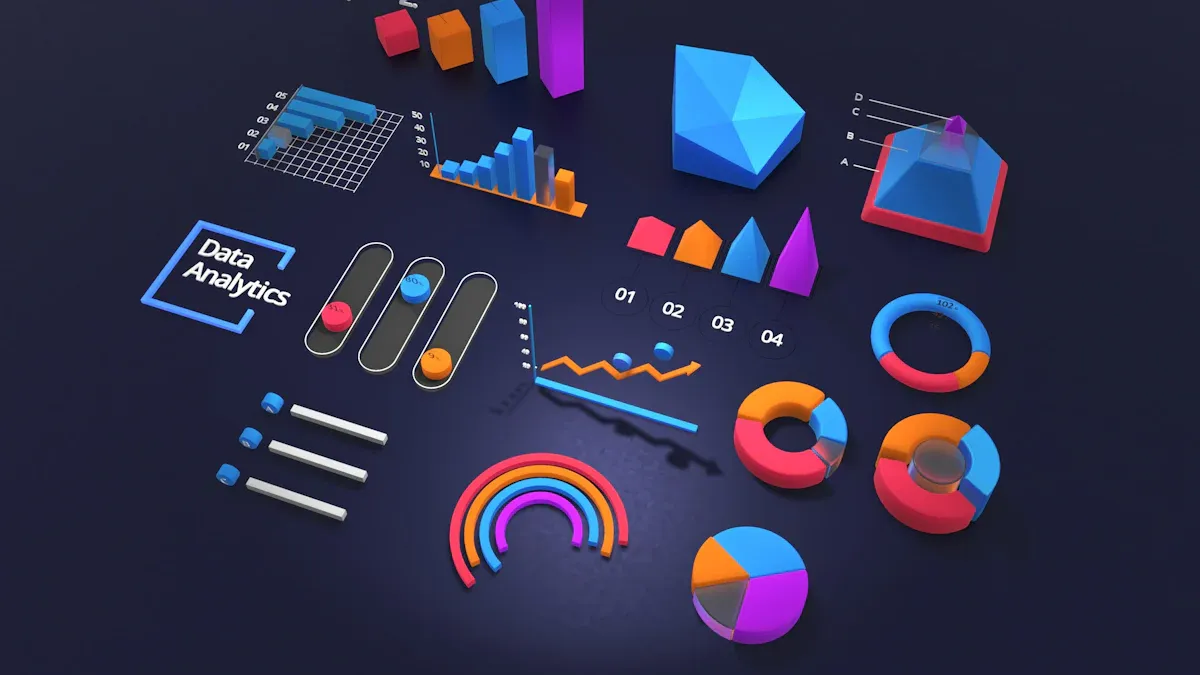
How to Create a Data Strategy Roadmap Step by Step
Build a data strategy roadmap step by step to align data initiatives, set clear goals, and drive business value with effective data management.
Howard
Nov 09, 2025



